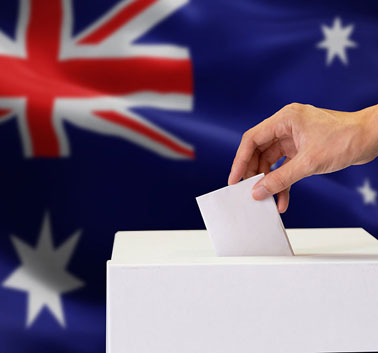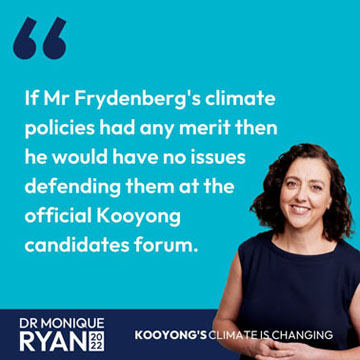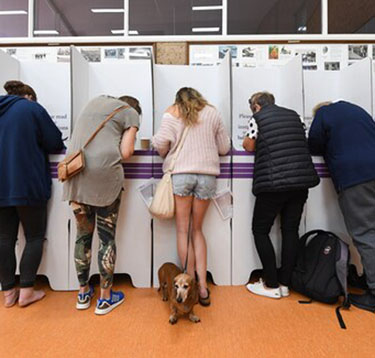A primer on May 21 Australian election for (non) voters in fellow Commonwealth Realm of Canada (&/or next door in USA!)
May 11th, 2022 | By Greg Barns | Category: Countries of the WorldSPECIAL FROM GREG BARNS. HOBART, AUSTRALIA, 11 MAY 2022. On May 21 Australians go to the polls in a general election. After what will be a dull contest, light on big ideas and competing visions, the choice will be between another term for the conservative Liberal National Party coalition led by Prime Minister Scott Morrison or the election, for the first time since 2013, of the centre left Australian Labor Party (ALP) headed by Opposition Leader Anthony Albanese. The policy differences between these parties are, much to the disappointment of many, few and far between. The level of voter disengagement is high. The real interest in this election is the rise of independent candidates who are threatening incumbent Liberals by presenting themselves as genuinely liberal.
The Coalition has been in office since 2013 and in that time has cycled through three leaders —Tony Abbott, Malcolm Turnbull and Morrison who has been Prime Minister since 2018. Morrison is a tenacious fighter, having won the previous election in 2019 against the odds. But this time it looks a step too far for a man who is described by some in his own party as dishonest, “a horrible person,” “a complete psycho”, and by French President Emmanuel Macron, a liar. The latter’s jibe came after Morrison announced Australia was joining the US and UK in the AUKUS grouping and cancelling an order for French made submarines.
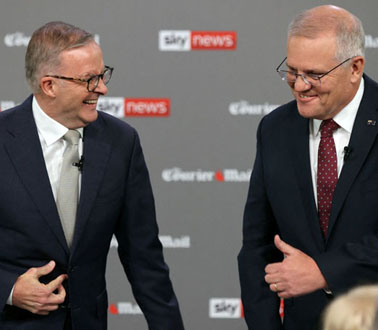
Morrison’s opponent Albanese is a child of the ALP. He has been in the federal parliament since 1996 and was a minister in the last Labor government of 2007-2013. Leader since 2019 Albanese has struggled to cut through with voters, albeit Covid has been a factor in that regard. He has maintained a “head down” approach to policy, with his party gun shy after it lost the 2019 election partly on the back of a scare campaign over much needed tax reform it proposed. Both the ALP and the Coalition have played the populist card with promises of big spending, despite the fact whomever wins will have to deal with a long term inflation threat, rising interest rates and a gaping budget deficit.
If the polls are right, Morrison’s government is too far behind to win this time. Opinion polls since last year, and they have not shifted despite Albanese being somewhat gaffe prone during the election campaign, have shown the ALP ahead of the Coalition by a margin of 53-54% to 46-47%. Currently the Coalition holds 77 seats, ALP 68, and minor parties and independents 6 seats in the House of Representatives. There is also a Senate election but, as is nearly always the case these days, it will be cross benchers who hold the balance of power in that chamber.
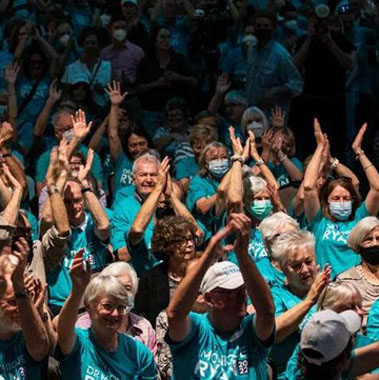
What is intriguing about this election is the rise of the so called ‘teal’ Independents – a reference to the colour used in their marketing. These are independent candidates bankrolled in part by Simon Holmes A’Court, a member of one of Australia’s wealthiest families who is campaigning for greater action on climate change. They are running in seats held by the Liberal Party where there is a preponderance of affluent, well educated voters many of whom have traditionally voted Liberal but who see the party as now deeply conservative and captured by vested interests.
In my 2003 book What’s Wrong with the Liberal Party? (Cambridge UP) I argued that there was a gap in the Australian political ideas marketplace. On the one hand the Liberals had shifted to the right ; the ALP was influenced by the union movement and its right wing faction kept it socially cautious ; and the Greens had emerged on the left. There was no progressive liberal force representing the views of voters who are concerned about issues such as climate change, Indigenous Australia, and economic reform. The ‘teal independents’ are filling that void and look like they have a fighting chance of being successful in removing from office senior Liberal MPs.
The power of the teal independents is demonstrated by the hard fight the current Treasurer (in Canada, Finance Minister) Josh Frydenberg is having against Monique Ryan. Frydenberg represents Kooyong, a seat in Melbourne’s inner eastern suburbs which has been the one of the safest Liberal seats in the nation and which was formerly held by Sir Robert Menzies, Prime Minister from 1949-1966 and founder of the Liberals. Ms Ryan is leading in some of the opinion polls and is garnering support from voters who are particularly concerned about the failure of the Morrison government to take seriously climate change and to establish an anti-corruption commission. Similarly in the wealthy south east of Melbourne Tim Wilson, a Liberal assistant minister, is behind Zoe Daniel, a former journalist.
Former Liberal ministers and leaders such as Fred Chaney, whose family has been a feature of the Liberal Party in Western Australia since the 1950s, is backing his niece Kate who is running as a teal independent in Perth. Chaney recently penned an opinion piece in The Age and Sydney Morning Herald lamenting the takeover of the Liberal Party by the right and the factional warfare that has been tearing the party apart around Australia.
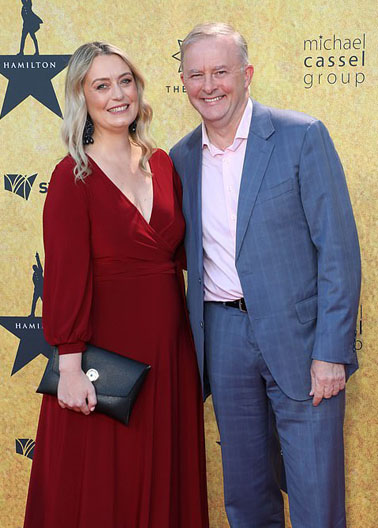
If the ALP is elected what might it do about some of Australia’s important unfinished business, such as constitutional recognition for Indigenous Australians, the move to a republic and a national human rights charter? It is certain that the Indigenous voice will be heard with Mr Albanese promising a referendum if he is elected. On the issue of an Australian head of state Mr Albanese and his party are committed to a republic and the imminent end of the reign of Queen Elizabeth will ensure the republic debate is back on the front burner. Australia’s appalling lack of human rights protection might also be a priority for the man likely to be Attorney-General, Mark Dreyfus. There have been three attempts since the mid-1970s to follow Canada on human rights protections and each has been stymied by right-wing media and political campaigning.
What would the election of Mr Albanese mean for the Trudeau government, given both are committed to containment of China and in particular to ensuring China’s Asia-Pacific influence is checked? The short answer is that there is unlikely to be any substantive policy change from that pursued by the Morrison government. However the megaphone diplomacy and sabre rattling by current Defence Minister Peter Dutton will likely be replaced by more nuanced advocacy. On climate change an Albanese government will be keen to shed the image of Australia as a laggard, but moving away from a reliance on coal both as a power source and a valuable export commodity will be politically difficult given influence of mining unions and key electorates in states such as Queensland.
One possible outcome for this election is a hung parliament, with teal independents and current minor party and independent MPs holding the balance of power. This has been considered a real prospect but appears less likely given the present state of the polls. If this scenario became reality it would be much more likely that the ALP would form an alliance and therefore a government with the predominantly liberal independent and minor party MPs.
What many Australians hope for is an end to this election campaign where the most talked about feature has been the tendency of some in the media to catch out Mr Albanese with “gotcha” questions.
Greg Barns is a former political adviser in Australia, the author of four books in Australian politics, and a weekly columnist for the Hobart Mercury.
